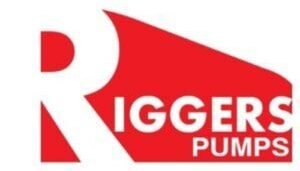Maintaining commercial car wash pumps is crucial to ensure their longevity, reliability, and efficiency in delivering consistent performance. Proper maintenance can prevent breakdowns, reduce downtime, and extend the life of the equipment. Below are key steps to maintain commercial car wash pumps effectively:
1. Regular Inspection and Cleaning
- Daily Inspection: Perform visual checks on the pump every day to look for signs of wear, leaks, or unusual noises. Check for any loose bolts, cracked hoses, or external damage.
- Clean Filters and Screens: Water filters and inlet screens can collect debris over time, which may restrict water flow and strain the pump. Clean or replace filters and screens regularly to maintain water quality and flow.
- Keep the Pump Clean: Regularly wipe down the exterior of the pump to prevent the buildup of dirt, dust, and chemicals. This will also allow you to spot any potential issues more easily.
2. Monitor and Maintain Fluid Levels
- Check Oil Levels: If your pump uses oil for lubrication, ensure that the oil level is adequate. Low oil levels can lead to overheating and premature wear of pump components. Top up with the manufacturer-recommended oil type as necessary.
- Change Oil Periodically: Change the oil in the pump according to the manufacturer’s recommendations, typically every 300 to 500 hours of operation, depending on the pump model and usage conditions. Using fresh oil helps reduce wear on moving parts.
- Check for Water Contamination in Oil: If the oil appears milky, it indicates water contamination. Water in the oil can reduce lubrication and cause rust or corrosion inside the pump. In such cases, replace the oil immediately and check for the cause of the leak.
3. Inspect Seals, Valves, and O-Rings
- Monitor Seals: Seals are critical in preventing leaks and maintaining pressure. Inspect them for any signs of wear or leakage. Replace seals at the first sign of damage to prevent water from leaking into sensitive components.
- Check Valves: Inspect valves periodically to ensure proper operation. If a valve is malfunctioning or blocked, it can reduce the pump’s pressure and efficiency. Clean or replace faulty valves as needed.
- Examine O-Rings: O-rings are used to prevent leaks in connections and seals. Check O-rings for wear, cracking, or deterioration. Replace them during routine maintenance to prevent leaks.
4. Maintain Proper Water Supply
- Ensure Consistent Water Flow: Commercial car wash pumps require a steady supply of clean water. Ensure that the water supply is adequate, and there is no restriction in flow from the source to the pump. Low water pressure or inconsistent water flow can cause cavitation, which can severely damage the pump.
- Use Clean Water: Dirty or contaminated water can damage the pump’s internal components over time. Always use filtered water to prevent sediment or particles from causing clogs, wear, or damage to the pump.
5. Monitor Pump Pressure
- Check Pressure Gauges: Regularly monitor the pump’s pressure gauge to ensure it is operating within the manufacturer’s specified range. High or low pressure can indicate potential issues such as blockages, leaks, or worn components.
- Adjust as Needed: If the pressure is too high or low, adjust the pressure settings according to the manufacturer’s recommendations. Incorrect pressure can reduce cleaning efficiency and strain the pump.
6. Lubricate Moving Parts
- Lubricate Bearings: Some pumps have bearings that require periodic lubrication. Ensure these parts are greased according to the manufacturer’s schedule to reduce friction and wear.
- Check Drive Belts and Pulley System: If the pump is belt-driven, check the condition of the drive belts. Ensure they are properly aligned and have the correct tension. Replace worn or damaged belts immediately to prevent breakdowns.
7. Winterize the Pump (in Cold Regions)
- Drain Water Before Freezing Temperatures: If you operate in an area with freezing temperatures, ensure that the pump is completely drained of water before it is exposed to freezing conditions. Water freezing inside the pump can cause damage to internal components.
- Use Antifreeze: For pumps used in cold climates, consider running antifreeze through the pump system to protect against freezing during cold months. Be sure to flush the antifreeze out before resuming regular operation.
8. Regularly Check and Replace Pump Components
- Replace Worn Parts: Regularly check components like plungers, pistons, and packing for wear and tear. Replace them as necessary to maintain optimal pump performance.
- Change Pump Components at Manufacturer-Recommended Intervals: Even if components don’t appear to be damaged, it’s good practice to replace key components like seals, gaskets, and O-rings based on the manufacturer’s recommended intervals to avoid unexpected failures.
9. Monitor the Pump’s Temperature
- Avoid Overheating: If the pump gets too hot, it may indicate that the pump is being overworked or that there is insufficient lubrication. Allow the pump to cool down if it overheats and investigate potential causes such as restricted water flow or overpressure conditions.
- Ensure Proper Ventilation: Make sure that the pump has adequate airflow around it to prevent overheating. Blocked ventilation can cause the pump to overheat and reduce its lifespan.
10. Schedule Professional Maintenance
- Annual Professional Inspection: Even with regular maintenance, it’s a good idea to have the pump inspected by a professional at least once a year. Professionals can identify issues that may not be visible during routine checks and perform any necessary repairs or replacements.
- Keep Maintenance Records: Maintain a detailed record of all maintenance activities, including inspections, parts replacements, and oil changes. This will help track the pump’s condition and anticipate future maintenance needs.
Conclusion
Maintaining commercial car wash pumps requires a consistent schedule of inspections, cleaning, lubrication, and component checks. By following these maintenance practices, you can maximize the pump’s performance, minimize downtime, and extend its operational lifespan, ensuring smooth and efficient operations in your commercial car wash business.

